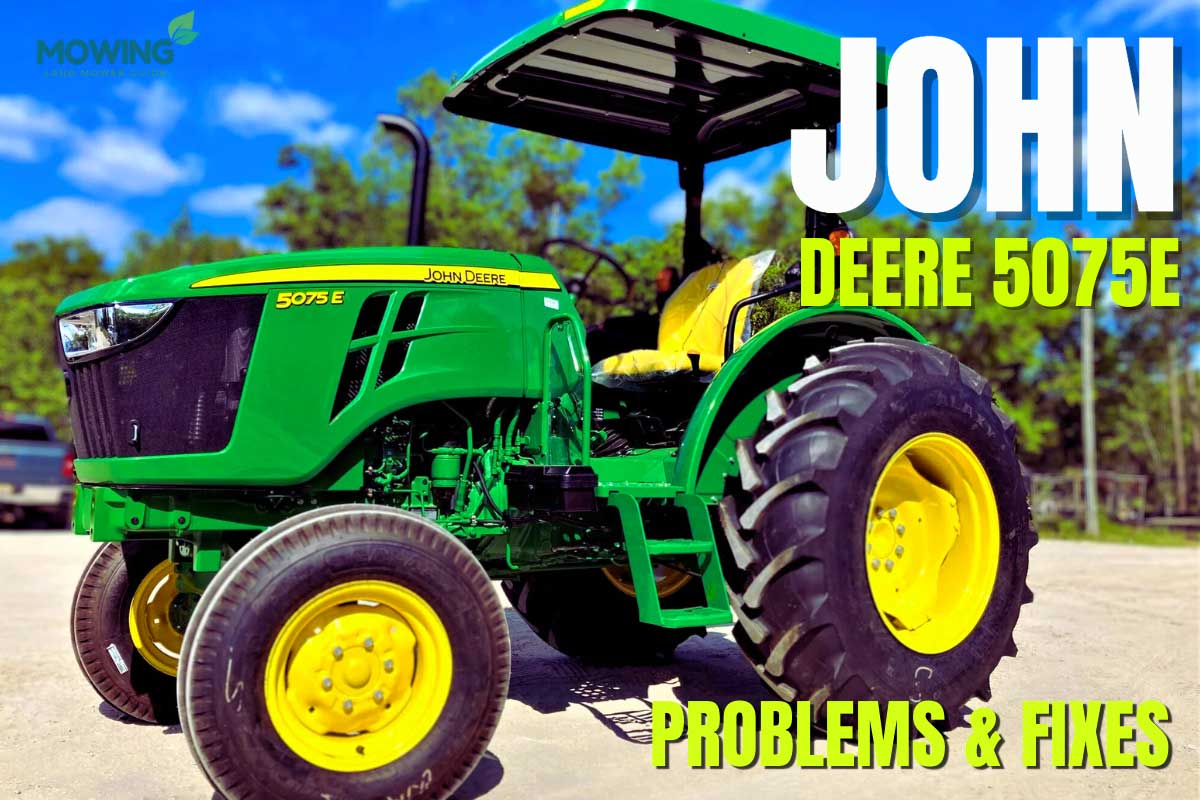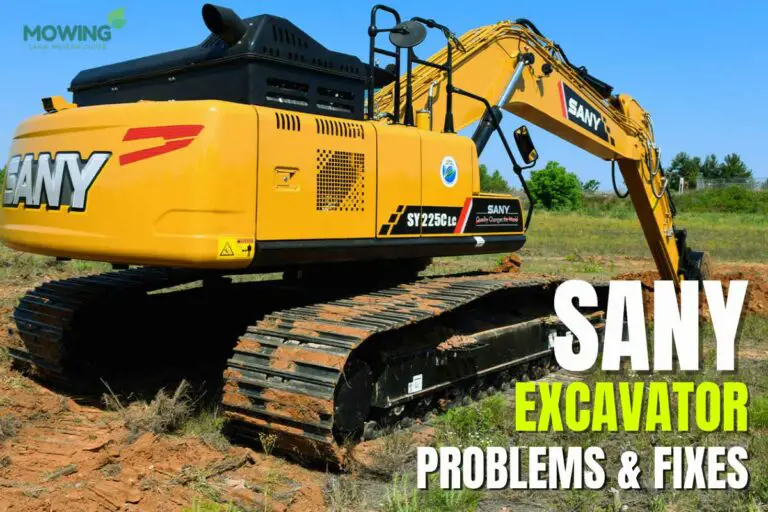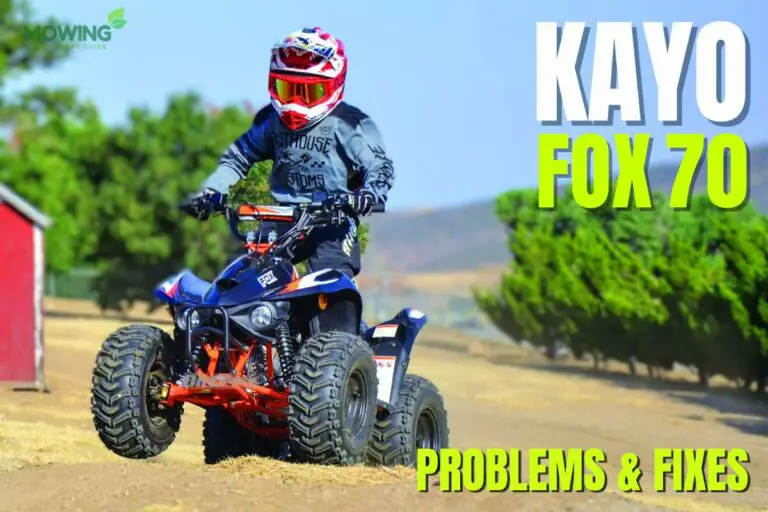
John Deere is a star in the farming tool industry. They have a line of the finest farm equipment, and John Deere 5075E is no exception. It’s a compact and powerful utility vehicle used mainly for mowing, scraping, puddling, and moving.
Unfortunately, this versatile utility tractor has some issues as well. John Deere 5075E problems affect reliability, durability, and overall performance. Let’s look into what difficulties you can expect while using this highly efficient tractor.
John Deere 5075E Problems and Its Fixes
John Deere is an iconic agricultural equipment market for producing high-quality and durable farming tools. Their tractors are one of the most reliable you can get. But no machines are perfect.
No matter how reliable and high-quality a machine is, it is bound to have some problems. And it is equally true with John Deere 5075E. We have listed some of the John Deere 5075E tractor problems claimed by John Deere users.
Read also: 12 Yamaha RMAX 1000 Problems And Easy Fixes
Problem 1: Transmission Problems in John Deere 5075E
There have been many complaints from John Deere users about various John Deere 5075E transmission problems. The slippage of transmission is a significant transmission issue with John Deere tractors.
Transmission slippage slows down the John Deere 5075E. In fact, transmission slipping can lead to severe accidents and will likely cause further damage to the transmission system.
Moreover, transmission problems can occur when it does not shift smoothly from gear to gear. That is, it is not staying in gear entirely when you drive. Besides, it suddenly shifts to neutral when you drive or remains neutral after you shift gears.
When the tractor is not accelerating as fast as usual or feels sluggish, it could be a transmission slipping problem. It indicates a transmission service is mandatory. Furthermore, leakage of transmission fluid leads to further transmission damage.
Transmission fluid is aimed at keeping the transmission system lubricated. A leak in transmission can gradually drain the fluid and causes a lack of transmission fluid. Insufficient transmission fluid won’t keep the transmission adequately lubricated.
This will create too much friction. Dirty fluid can also cause transmission problems. Moreover, there is a filter in the transmission fluid. The function of the filter is to keep the transmission fluid clean.
A clogged filter will not let the fluid pass through it. This can cause the transmission to overheat or, sooner or later, shut down completely.
How to Fix It?
Problem 2: Clutch Problems in John Deere 5075E
The John Deere 5075E Clutch problems occur when you are using it for heavy-duty jobs. For example, the clutch will likely break if you have used the tractor for more than 200 hours simultaneously.
Sometimes you may have pressed the clutch pedal, but the clutch is jammed. That is, your clutch is not working. In such a case, the tractor might shake a bit. You may also find it challenging to switch between gears.
When the clutch isn’t working, you can expect that the clutch assembly is possibly damaged. Or perhaps, there is something wrong with the transmission. This will lead to other issues like brake failure in your John Deere 5075E.
How to Fix It?
Usually, issues with the clutch in John Deere 5075E will require a professional to fix. You can still do it if you have knowledge about the John Deere 5075E clutch adjustment. Follow the steps below to fix John Deere 5075E clutch problems.
Read also: John Deere 1025r Hydraulic Problems And How To Fix?
Problem 3: John Deere Fan Clutch Problems
The John Deere fan clutch problem is another serious issue to address. Wear or damage in the fan clutch, fan blades, and fan belt may lead to severe problems in John Deere 5075E. Also, clogged fan blades can make the clutch stop working.
How to Fix It?
Problem 4: The Engine is Not Starting
Sometimes you may have a hard time starting the engine of the John Deere 5075E. It mostly happens as a result of voltage drop throughout the system. A clogged filter may also raise the issue of starting the engine.
How to Fix It?
Problem 5: Fuel Problems in John Deere 5075E
Problems with the fuel of the John Deere 5075E will eventually affect the tractor’s overall performance. The tractor may stop working in the middle of the operation.
A clogged filter may be responsible for the John Deere tractor losing its power. When the filter is clogged, the engine cannot get fuel as it is supposed to. It causes the tractor to lose its power anytime.
Moreover, a faulty fuel pump is to blame for John Deere losing its power. A faulty fuel pump results in low fuel pressure. As a result, it affects the tractor’s overall performance. When the fuel injection pump is not adjusted properly, it may affect the tractor’s performance.
How to Fix It?
Read also: 11 Common Sany Excavator Problems and How to Fix?
Problem 6: Power Loss in John Deere 5075E
A balanced combustion ratio is essential for the John Deere 5075E tractor to function correctly. And the tractor needs fuel, oxygen, and a spark to perform combustion by igniting the mixture.
When the spark plug is damaged and the combustion ratio is not maintained, it prevents the engine from working correctly. Moreover, a clogged air filter and spark plugs are also responsible for power loss problems.
How to Fix It?
Problem 7: Starter Problems
Starter problems occur in almost every machine and disrupt its performance. John Deere 5075E is no exception. It occasionally goes through a problematic starter. Sometimes, faulty spark plugs are to blame for starting failure.
How to Fix It?
Problem 8: John Deere 5075E Hydraulic Problems
When the air and water accidentally mix in the inner parts of the tractor, it causes hydraulic problems. If you notice the issue too late, it can over-cool or overheat the engine.
As a result, hydraulic fluid will lose its lubricating properties gradually. This will eventually cause other problems, such as poor oil circulation, low hydraulic fluid, faulty filtration systems and oil contamination.
How to Fix It?
Read also: 8 Common Yardsport Ys200 Problems and Solutions
Problem 9: Overheating
Sometimes, the engine of John Deere 5075E overheats during operations, mainly when used for a few hundred hours. If you start the tractor with the engine overheated, it can melt the engine parts and blow the gaskets.
This can even damage the entire engine. A radiator with inadequate coolant is to blame for overheating the engine. A clogged cooling fin can also cause the problem. Also, the worn-out fan belt can cause the engine to overheat.
How to Fix It?
Final Thoughts
Having John Deere 5075E problems should not be a concern now. You now know all the possible John Deere problems you will likely experience while using the vehicle. Thankfully, you can fix the issues and get your John Deere 5075E back to peak performance.







